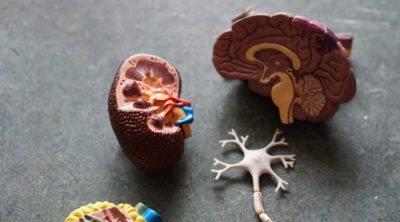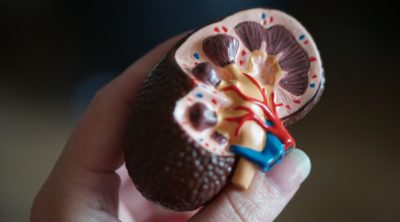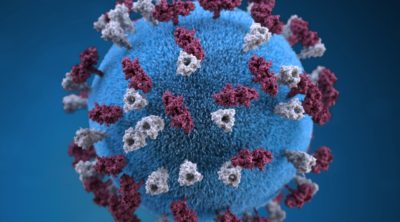
Learn all about the 12 cranial nerves and their functions from the following article. This will help you understand the importance of these nerves in the functioning of our body.
Brain is an important center in our body that controls all the other organs, functions, as well as sensations. There are many nerves arising from the brain and reaching various parts of the body. There are 12 cranial nerves that carry out the most important functions in the human body systems. These nerves are very important, as most of them involve the interpretation of the five senses of our body. Some of these also help in controlling the muscles and glands. You will find that each of the specific nerves’ names are represented with a Roman numeral. This article will discuss these specific nerves and their functions in brief.
Olfactory Nerve I
This is a fully sensory nerve that originates in the telencephalon, the largest division of the human brain. These nerves have an anterior olfactory nucleus. The function of this cranial nerve is sense of smell. This nerve reaches the cerebral cortex, but does not enter the thalamus.
Optic Nerve II
The optic nerve II is also a fully sensory nerve. It originates from the diencephalon region of the brain and includes the ganglion cells of the retina. The function of these nerves is sense of light and vision. If these nerves are damaged, it leads to temporary or permanent blindness.
Oculomotor Nerve III
This is also a fully sensory nerve that originates from the midbrain. It helps in controlling the pupil constriction and eye movements. It helps the eyes respond to external stimuli and accordingly constrict or dilate the pupils as and when the light conditions change.
Trochlear Nerve IV
This is a mostly a motor nerve that originates from the trochlear nucleus. It has an important function in the movement of the eyeball. It helps one look down or look towards a midline object.
Trigeminal Nerve V
The trigeminal nerve functions both as a sensory as well as a motor nerve. It originates from the pons and has a role in controlling the muscles of the face. It helps in chewing, and provides a sensation of pain and touch to the face as well as head region.
Abducens Nerve VI
This motor nerve originates from the posterior margin of Pons. It helps in the movement of eyes to move away from the midline of the face. It works in association with cranial nerves III and IV, and helps one see normally. If there is any problem in the function of these nerves, one tends to have double vision.
Facial Nerve VII
The facial nerve VII has both sensory as well as motor functions. It originates from the pons, just above the olive. It provides the facial muscles the ability to smile, frown, and form any other facial expressions. It also helps two third region of the tongue to sense taste. The facial nerve also provides the sensation of touch and pain to the ear.
Vestibulocochlear Nerve VIII
This is a sensory nerve that has a role in the sense of sound. It also helps in maintaining balance (gravity) and movement of the body. This means that it plays a role in the acoustic and vestibular functions.
Glossopharyngeal Nerve IX
The glossphrayngeal nerve IX has sensory and motor functions. It arises from the medulla in the brain. It helps one develop taste in the back of the tongue. It also provides the sense of touch on the tongue and tonsils. This nerve also has a role in controlling the muscles of the mouth during swallowing.
Vagus Nerve X
This also works as a sensory and motor nerve. It has one of the most important functions in the human body of controlling the sensory as well as motor functions of the heart and glands. It also has a role in digestion.
Cranial Accessory Nerve XI
The cranial accessory nerve XI is a motor nerve. It is also called spinal accessory nerve. It helps in controlling the trapezius and sternocleidomastoid muscles that are involved with the movements of the head.
Hypoglossal Nerve XII
The hypoglossal nerve XII is the 12th cranial nerve. It is a motor nerve that helps in the proper movement of the tongue.
Acronyms of the Cranial Nerves
Are you finding it difficult to memorize the names of these nerves and their funcitons? Memorizing their acronym may help you do the trick.
| Acronym | Names | Mnemonics | Functions |
| OLd | Olfactory | SOME | Smell |
| OPie | Optic | SAY | Vision (retinal) |
| OCcasionally | Oculomotor | MARRY | Pupil constriction and eye movement |
| TRies | Trochlear | MONEY | Eye movement |
| TRIGonometry | Trigeminal | BUT | Mastication and face sensation |
| And | Abducens | MY | Eye movement |
| Feels | Facial | BROTHER | Face muscles control, 2/3 taste on tongue |
| VEry | Vestibulocochlear nerve | SAYS | Hearing |
| GLOomy | Glossal-pharyngeal | BIG | Gag sense and swallowing |
| VAGUe | Vagus | BRAINS | Parasympathetic functions, coughing |
| And | Spinal accessory | MATTER | Shrugging shoulders |
| HYPOactive | Hypopharyngeal | MOST | Tongue protrusion |
Nerves are a very important part of the nervous system that helps one respond to the five basic senses. Any damage to these can lead to loss of hearing, vision, sense of touch, taste, or smell.


